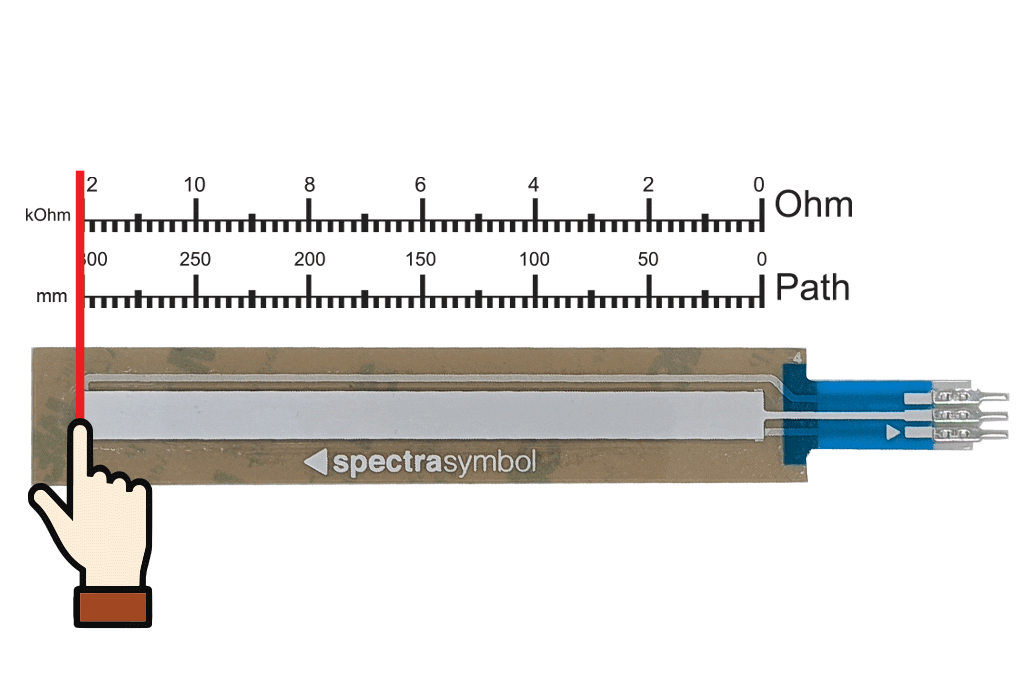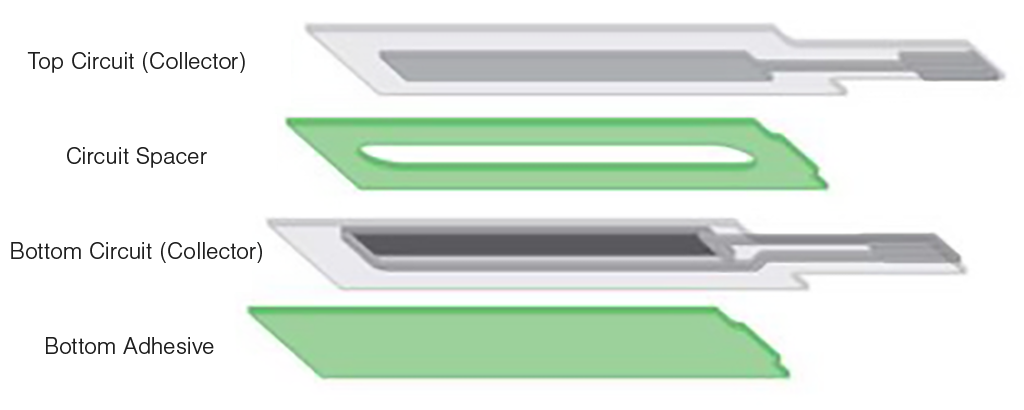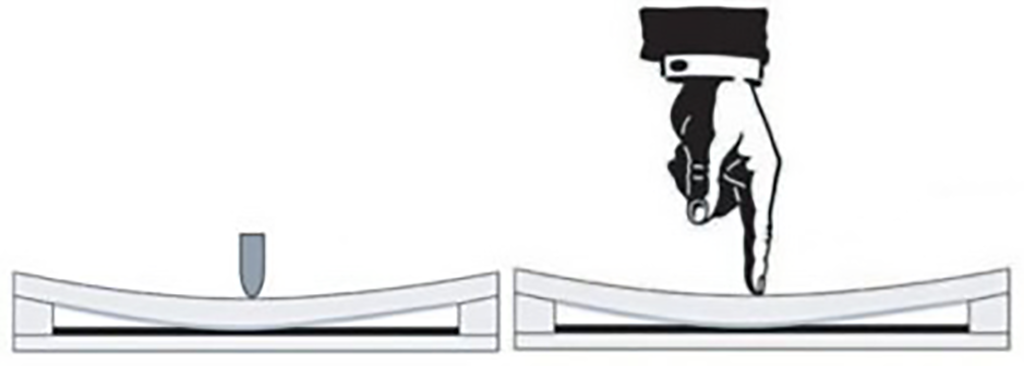FAQs
How does a soft membrane linear potentiometer work?

In simple terms, the membrane potentiometer is a resistive element, which comprises a conductive resistor, a sealed encasement and a simple wiper assembly. A membrane potentiometer can also function as a voltage divider.
Our potentiometer is a three-wire system with two resistive output channels and an electrical collector channel.
By pressing a wiper down onto the top circuit the potentiometer produces the desired electrical output.
The “wiper” is a non-conductive mechanism that depresses the top circuit actuating the potentiometer from the outside of the element. The top and bottom circuits are separated by 0.15mm (0.006″) of spacer adhesive build-up and contact between the circuit occurs by pressure (usually 1-3 Newtons) from the wiper on the top circuit, pushing down until the top circuit connects with the bottom circuit to create a potentiometric output.
he construction of the wiper design can adapt to any application because most materials can serve as the wiper: plastics, metals, sliders, rollers, wheels, etc. Also, the potentiometer can also be manually (hand) actuated.

